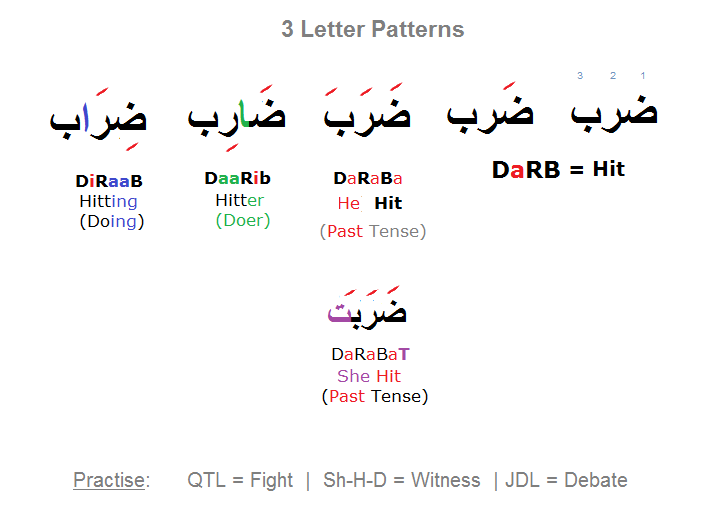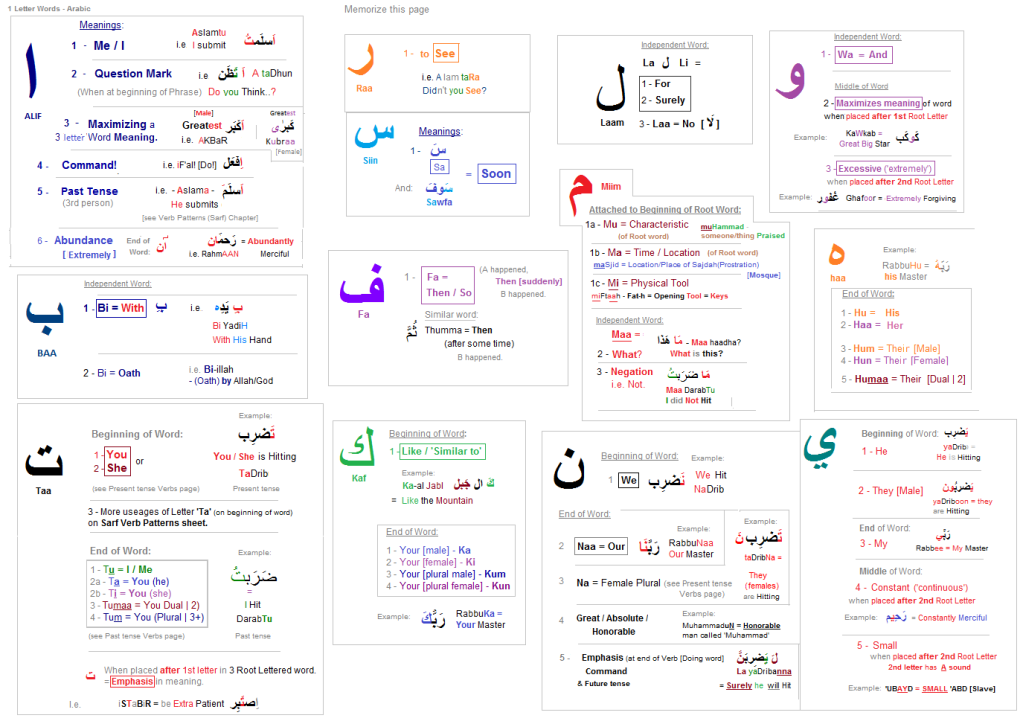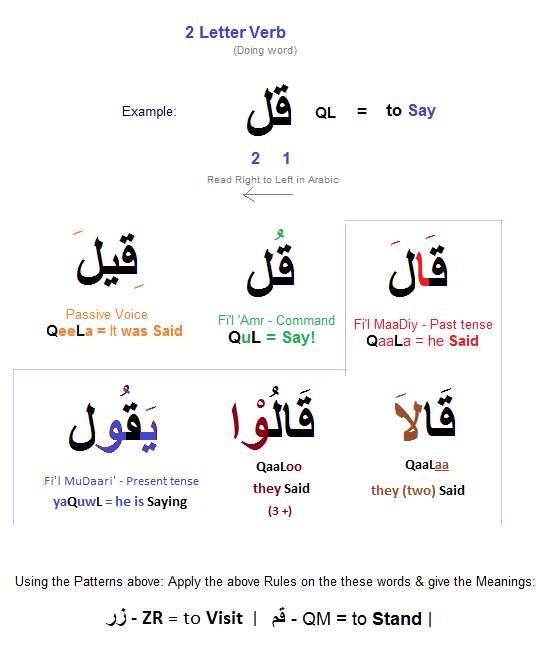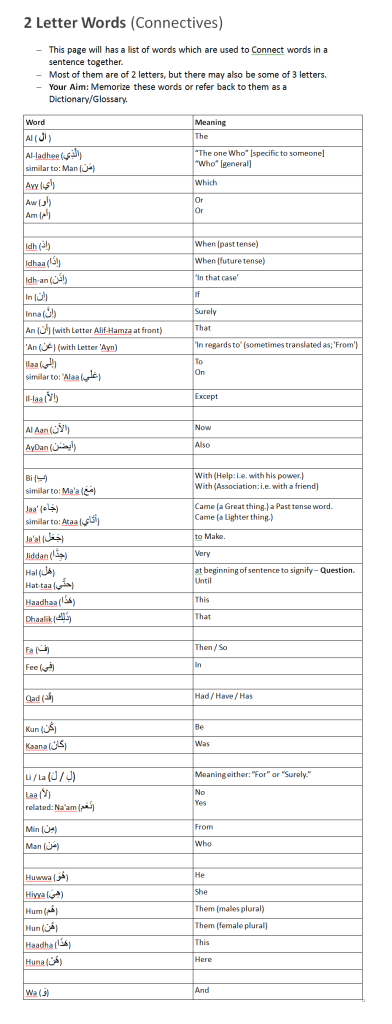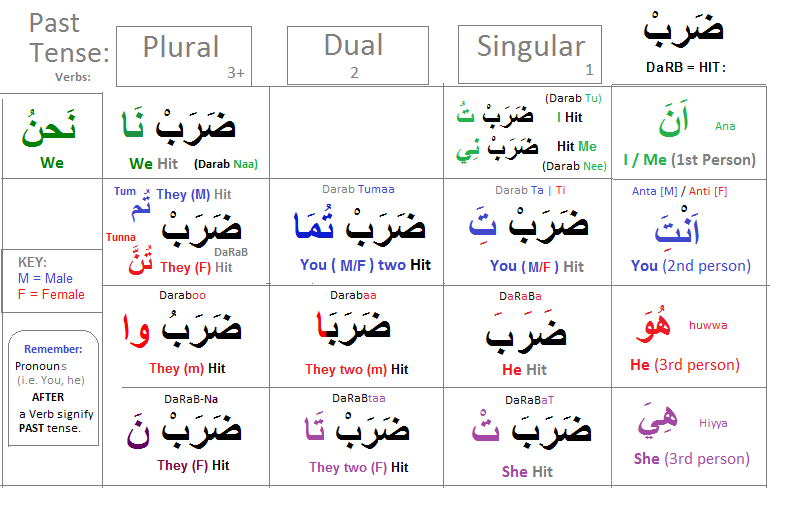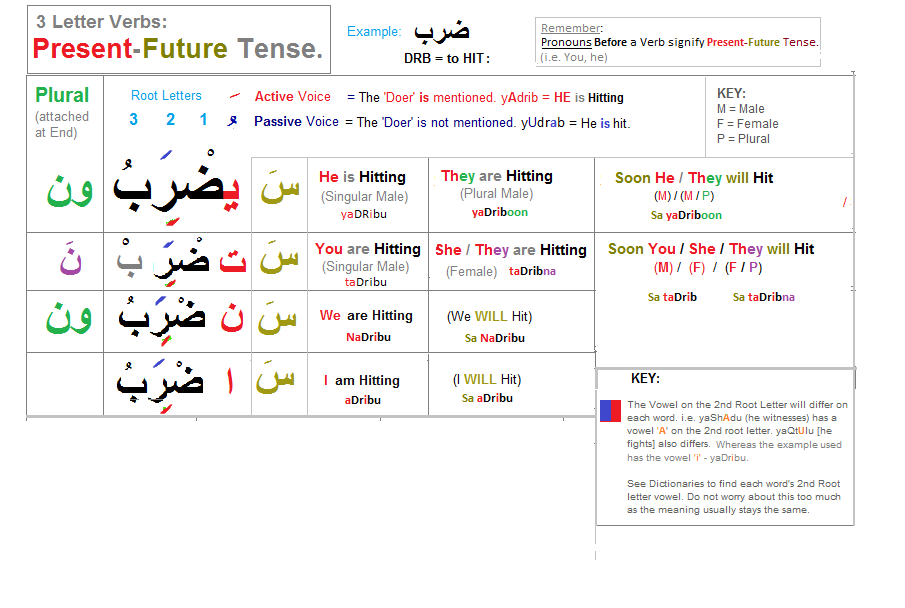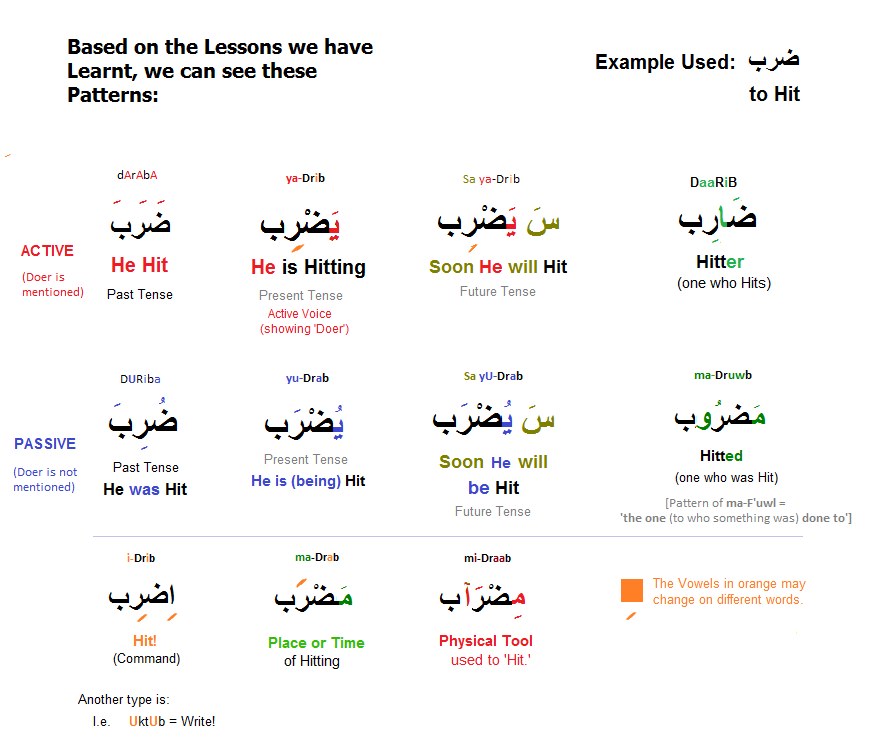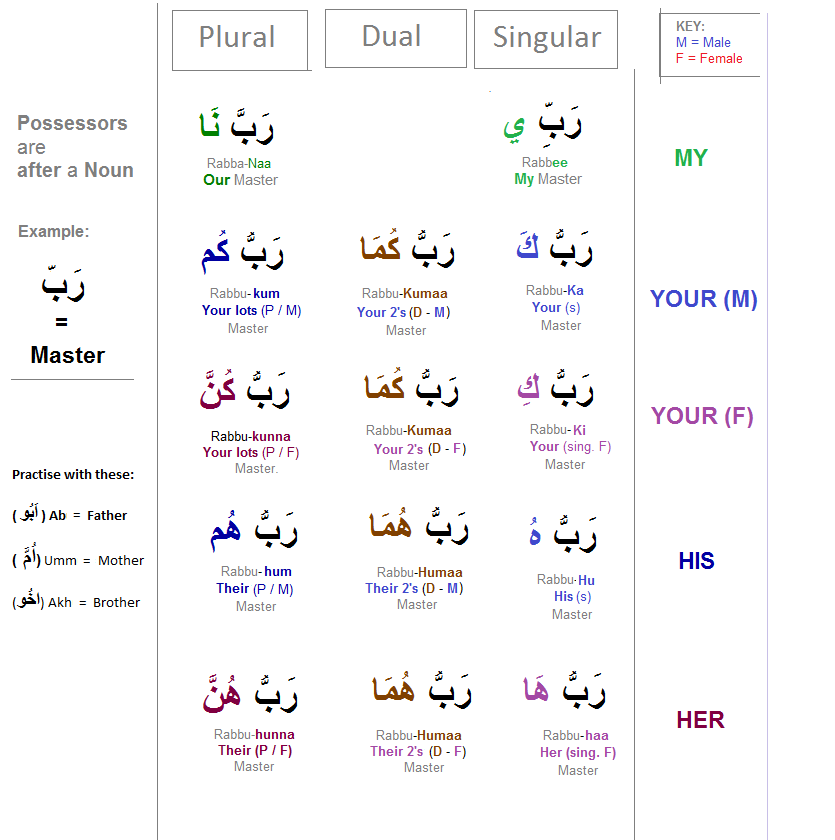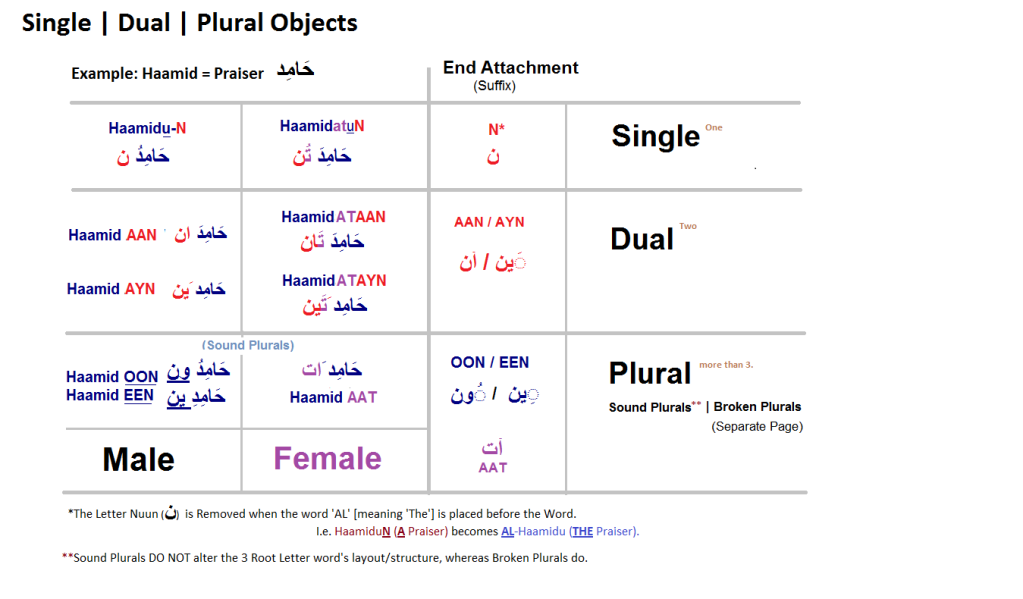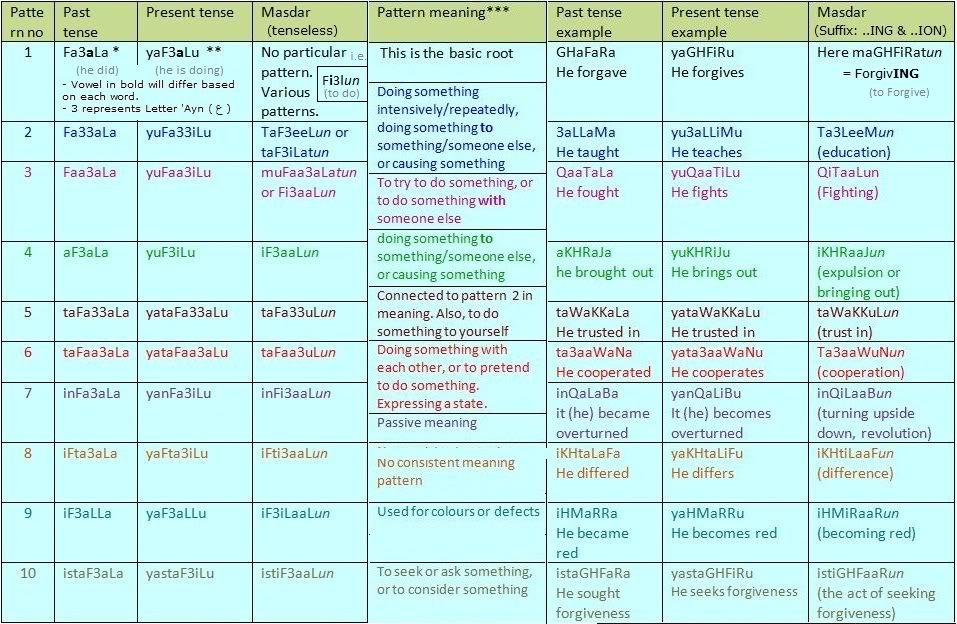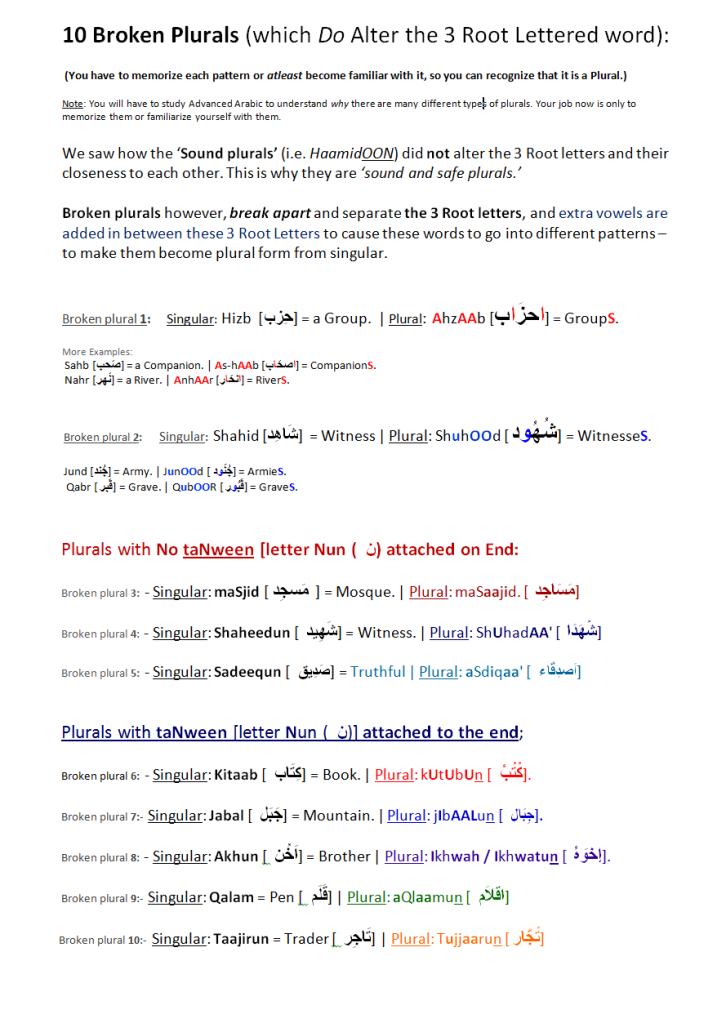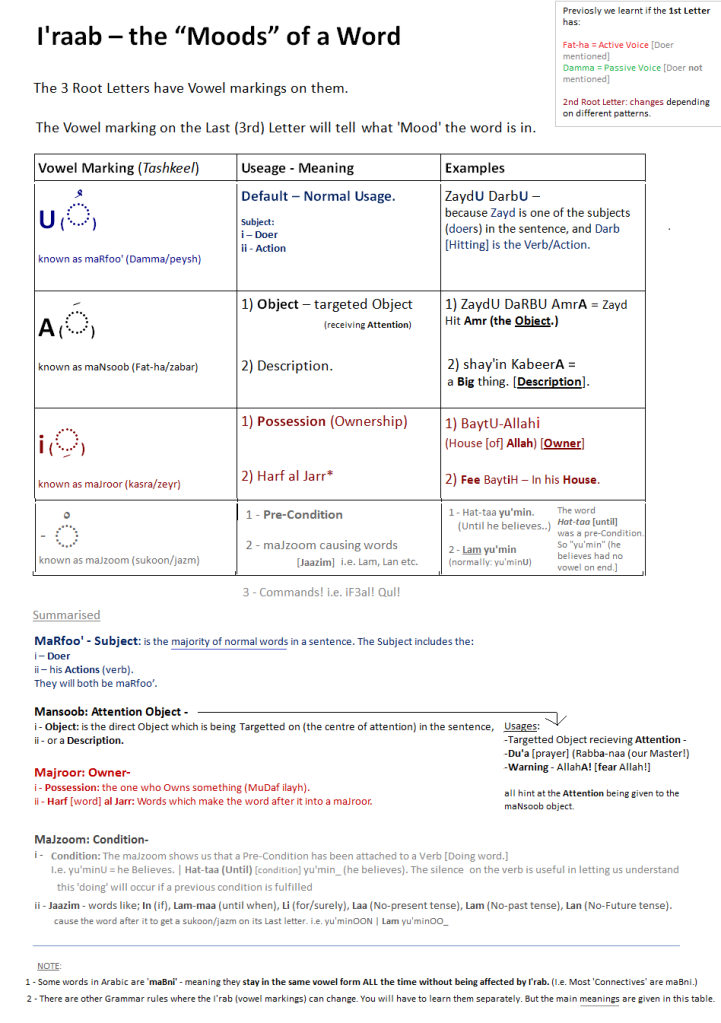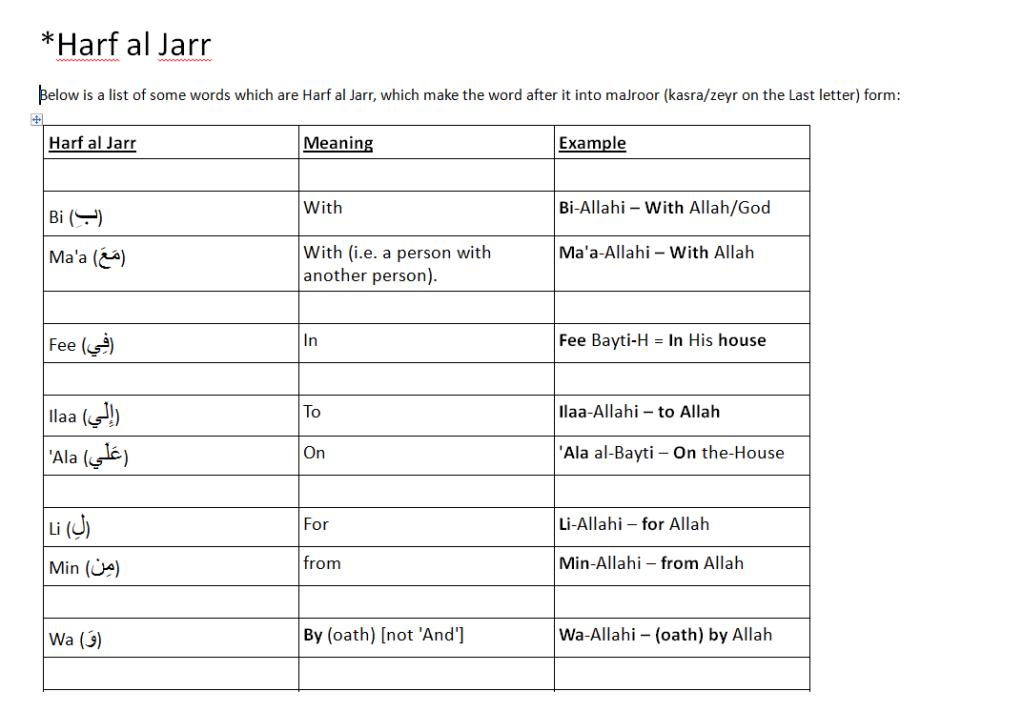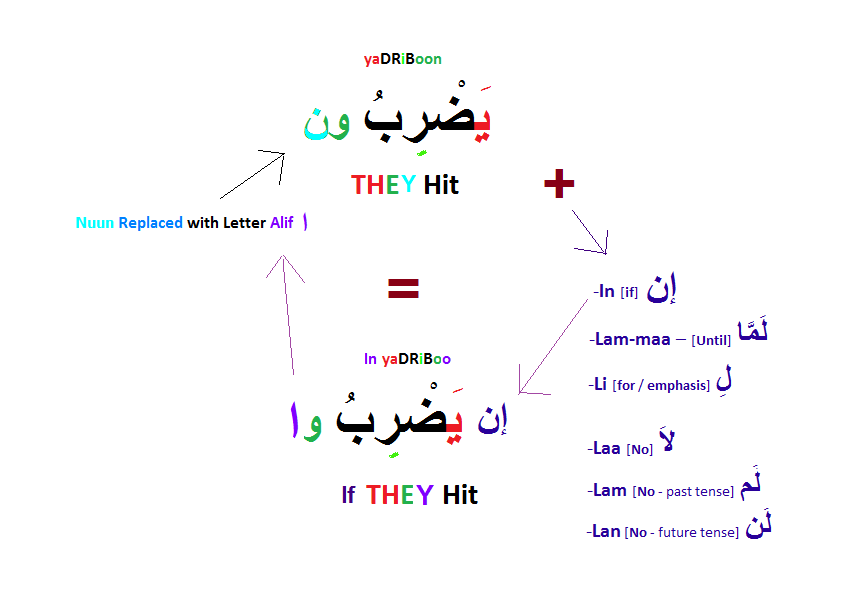- Qatada -
Spread this Avatar!
- Messages
- 11,349
- Reaction score
- 2,692
- Gender
- Male
- Religion
- Islam
Asalaamu alaykum waRahmatullah waBarakaatuh
Simple Arabic Lessons!
These lessons will allow you to understand Arabic within 2 weeks (if you're a really good memorizer), or a month (if you're a slower memorizer) inshaa' Allah.
How does it work?
I have made some coloured Learning Tables, you have to memorize them. And we move onto the next lesson. Simple (smile.)
Arabic Layout:
Arabic is made up of; 1 Letter words, 2 Letter words, 3 letter words, and sometimes 4 letter words.
I will work gradually in posting 1 Table a day, you have to memorize the table as much as you can. And in that day, you can ask questions.
The next day, I will be giving you the next table, etc.
After 2 weeks:
Once you have memorized the tables altogether, you will have got a strong feel of how Arabic language works. This will make it extremely easy for you to understand the language when reading and hearing; Qur'an, Sunnah, or a speech etc.
NOTE: you can download all the tables from here at once. But you might not fully understand them till you ask here.
Last Advice:
You have to make du'a (prayer) to Allah if you really want to learn Arabic, and Allah will help you. It worked for me, alhamdulillah!
I have made some coloured Learning Tables, you have to memorize them. And we move onto the next lesson. Simple (smile.)
Arabic Layout:
Arabic is made up of; 1 Letter words, 2 Letter words, 3 letter words, and sometimes 4 letter words.
I will work gradually in posting 1 Table a day, you have to memorize the table as much as you can. And in that day, you can ask questions.
The next day, I will be giving you the next table, etc.
After 2 weeks:
Once you have memorized the tables altogether, you will have got a strong feel of how Arabic language works. This will make it extremely easy for you to understand the language when reading and hearing; Qur'an, Sunnah, or a speech etc.
NOTE: you can download all the tables from here at once. But you might not fully understand them till you ask here.
Last Advice:
You have to make du'a (prayer) to Allah if you really want to learn Arabic, and Allah will help you. It worked for me, alhamdulillah!
Last edited:

